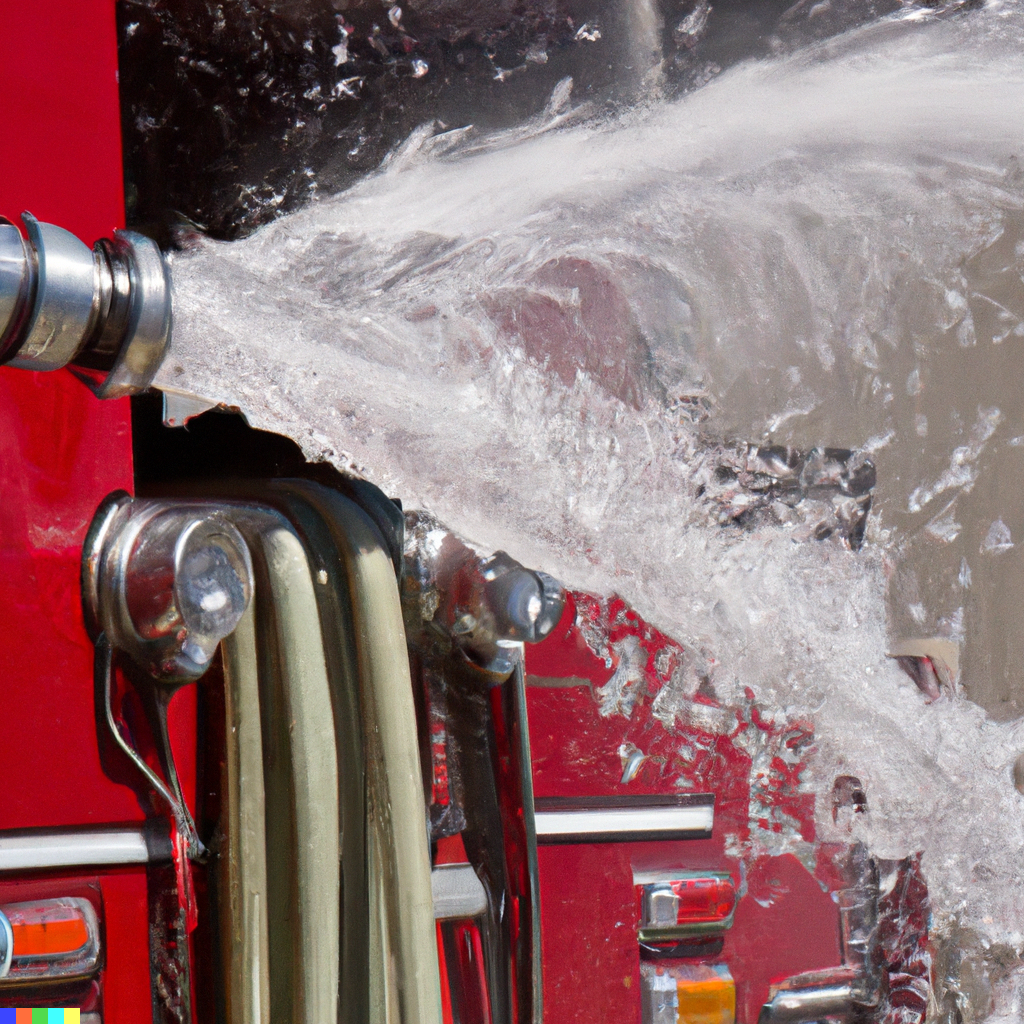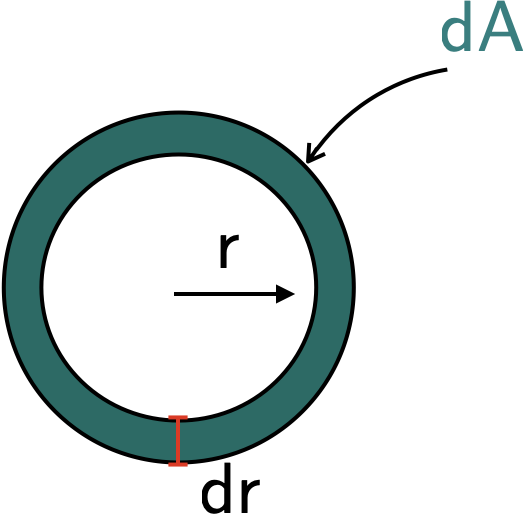Note the control volume that has been drawn around the nozzle.
Solution
On the left-hand side, we have both \(\require{color}{\color[rgb]{0.315209,0.728565,0.037706}p_1}\) and atmoshpheric pressure acting, while on the right-hand side it is just atmospheric pressure. Thus, we can express the pressure forces as:
\[
\large
\require{color}\sum {\color[rgb]{0.315209,0.728565,0.037706}p}A = {\color[rgb]{0.315209,0.728565,0.037706}p_1} A_1 - 0.
\]
Applying the steady flow momentum equation along the horizontal direction yields
\[
\large
\require{color}F_{\color[rgb]{0.986048,0.008333,0.501924}x} + \sum {\color[rgb]{0.315209,0.728565,0.037706}p}A = \sum \dot{m}_{out} {\color[rgb]{0.059472,0.501943,0.998465}v_{out}} - \sum \dot{m}_{in} {\color[rgb]{0.059472,0.501943,0.998465}v_{in} }.
\]
From continuity, we now that \(\dot{m}_{out} = \dot{m}_{in}\), leading to
\[
\large
\require{color}F_{\color[rgb]{0.986048,0.008333,0.501924}x} + {\color[rgb]{0.315209,0.728565,0.037706}p_1}A_1 =\dot{m}_{in} \left( {\color[rgb]{0.059472,0.501943,0.998465}v_{out}} - {\color[rgb]{0.059472,0.501943,0.998465}v_{in} } \right)
\]
\[
\large
\require{color}F_{\color[rgb]{0.986048,0.008333,0.501924}x} + {\color[rgb]{0.315209,0.728565,0.037706}p_1}A_1 = {\color[rgb]{0.918231,0.469102,0.038229}\rho} A_{in} {\color[rgb]{0.059472,0.501943,0.998465}v_{in} }\left( {\color[rgb]{0.059472,0.501943,0.998465}v_{out}} - {\color[rgb]{0.059472,0.501943,0.998465}v_{in} } \right)
\]
\[
\large
\require{color}F_{\color[rgb]{0.986048,0.008333,0.501924}x} = {\color[rgb]{0.918231,0.469102,0.038229}\rho} A_{in} {\color[rgb]{0.059472,0.501943,0.998465}v_{in} }\left( {\color[rgb]{0.059472,0.501943,0.998465}v_{out}} - {\color[rgb]{0.059472,0.501943,0.998465}v_{in} } \right) - {\color[rgb]{0.315209,0.728565,0.037706}p_1}A_1.
\]
Next we work out the velocity at the inflow using continuity, i.e., \(\dot{m}_{in} = \dot{m}_{out}\),
\[
\large
\require{color}{\color[rgb]{0.059472,0.501943,0.998465}v_{in}} = \frac{A_{out}}{A_{in}} {\color[rgb]{0.059472,0.501943,0.998465}v_{out}} = \left( \frac{5m}{10m} \right)^2 \; {\color[rgb]{0.059472,0.501943,0.998465}20 m/s} = {\color[rgb]{0.059472,0.501943,0.998465}5 m/s}.
\]
Plugging in the velocity values, we have \[
\large
\require{color}F_{\color[rgb]{0.986048,0.008333,0.501924}x} = {\color[rgb]{0.990448,0.502245,0.032881}1000 \frac{kg}{m^3}} \frac{\pi}{4} \left( 0.1 m \right)^2 {\color[rgb]{0.059472,0.501943,0.998465}5 m/s }\left( {\color[rgb]{0.059472,0.501943,0.998465}20 m/s} - {\color[rgb]{0.059472,0.501943,0.998465}5 m/s } \right) - {\color[rgb]{0.315209,0.728565,0.037706}p_1}\frac{\pi}{4} \left( 0.1 m \right)^2.
\]
For numerical values, please see the code below.



